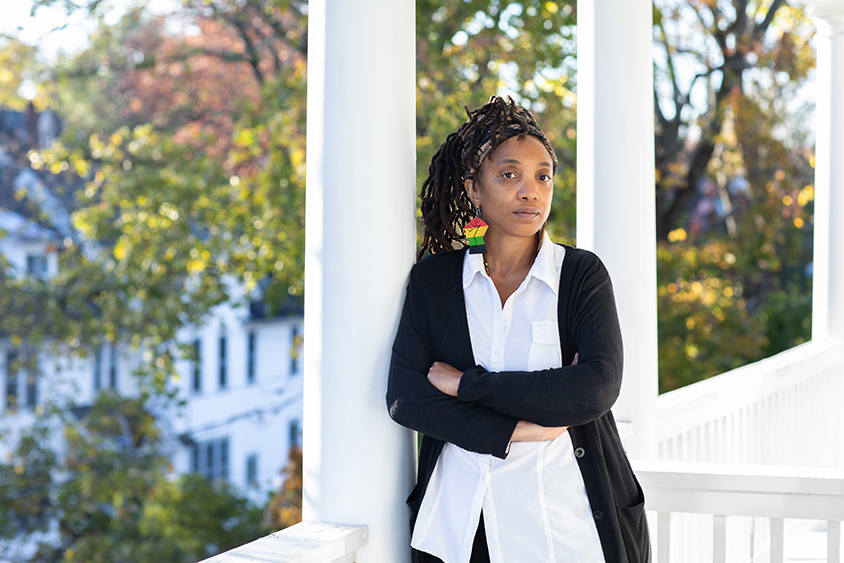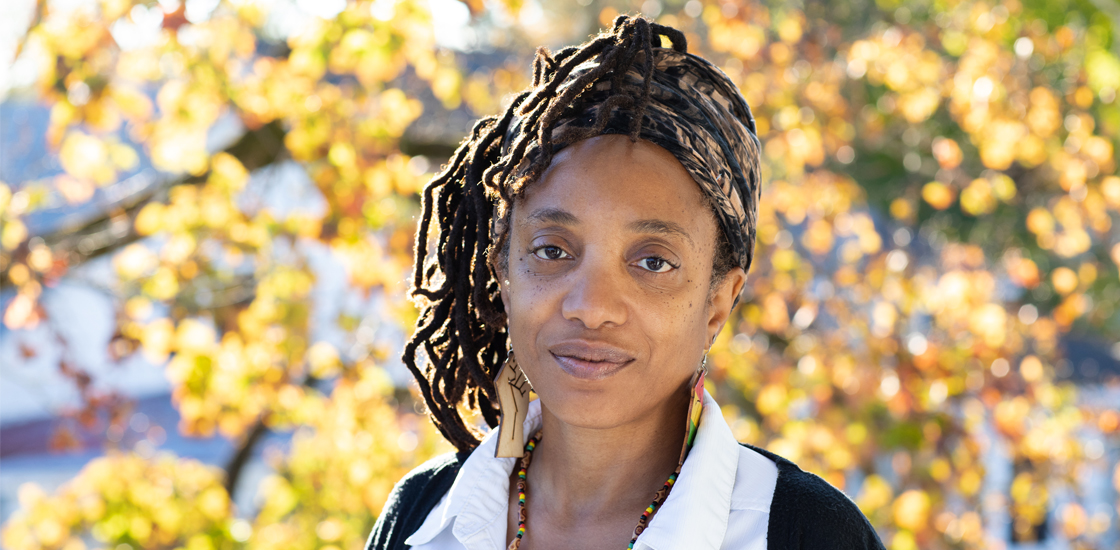Black people with autism face numerous obstacles to care in the United States, including long wait times for evaluations and limited access to the services they need. And they are often not included in research, leaving them underserved in other ways.
It’s a struggle that Kim Kaiser, director of programming at The Color of Autism Foundation, knows firsthand. Staff at her autistic son’s school initially told her he had oppositional defiant disorder, a misdiagnosis that research suggests may happen often with Black children. Another clinician didn’t understand the boy’s native language, Jamaican Patois, and so underestimated his language skills. It wasn’t until Kaiser found a Jamaican psychologist that her son was assessed correctly.
“It was three completely different evaluations,” Kaiser says.
Kaiser says her son’s diagnostic odyssey inspired her work at The Color of Autism, where she trains Black families to navigate the complexities of an autism evaluation and to advocate for their children at school and elsewhere.
“If I’m having this trouble, and I have the skills, knowledge base and education, what is going on with parents who don’t have the education, don’t have the advocacy skills and can’t seem to find their voice to protect their child?” she says.
Kaiser spoke with Spectrum about The Color of Autism’s work, why researchers fail to reach Black families and what’s needed to fix that disparity.
Spectrum: What is The Color of Autism’s mission?
Kim Kaiser: What we want to do, first and foremost, is tackle the disempowerment within the Black community, and tackle the lack of resources within the community, by arming parents to be their child’s first and best advocate. Because the more we get them to do that, the more we can present a unified front to state, local and federal governments to push for changes. We focus on self-efficacy, family-centered strengths. We want to create the next founders of an organization like The Color of Autism, so we want families to pay it forward within their community.
S: What do you cover in your trainings?
KK: We teach parents how to plan for a visit with a pediatrician, how to request a referral to an autism specialist and how to get that testing at various stages of your child’s life. We give them the basics of a therapy called applied behavior analysis (ABA), we explain to them the comorbidities of mental health and autism. And we work on preparing them for the transition from childhood to adulthood, and talk about what they need to look for in a college or employment training. We teach them how to affirm and build self-advocacy skills in their child, as well as how to plan for their future from guardianship to group home or supportive living.
S: How is your organization coping with the pandemic?
KK: It has changed how we function. But it’s good because when we do our trainings online, we’re able to reach more people. We’re getting calls from people even outside of the country for advice and guidance. And it has opened up our eyes even more to the disparities across the country within the Black community.
S: What interactions has The Color of Autism had with researchers?
KK: We have people say, “Based on the research we did, we have this tool, and we want to use it and see how it works for your population.” Well, where was our population when you were doing the research to craft the tool? We get a lot of, “We want to see how the community feels about the research we did,” — past tense. And even when they want to engage the community, it’s for a short period of time, and for tools that that community cannot afford to use moving forward — tools that don’t adequately represent what works for us. And that is the most frustrating thing.
One of the biggest issues is the lack of diversity that exists among researchers. You have a ‘one-size-fits-all’ idea for research. But yet you want us to send you families for that research, when there’s nobody with an effective cultural lens who is vetting the questions, vetting how the research is going to be done and how questions are asked. There is a lack of researchers of color who are coming to this with a solid monetary backing and support. We need research that is done for us and by us. That is very important.

S: What questions should researchers ask themselves when designing studies to be more inclusive?
KK: What are the cultural mores of Black and African-American families, and how do you appropriately ask them questions? How do you get buy-in from families? What is the impact of historical trauma in the family? Of poverty in the family? What drives this research? Will it empower and serve to close service gaps? Can an organization like The Color of Autism use this data to improve things?
That person-centered, family-centered approach will help inform how therapists deliver treatments like ABA, or how clinicians do the Autism Diagnostic Observation Schedule. It’ll improve how researchers and clinicians do cognitive testing. It will also improve how schools view a Black child with autism. It can reduce misdiagnoses. And as a result, it will improve how services are delivered to families.
S: What are some topics you would like to see autism researchers explore?
KK: Even though we are closing the gaps in diagnosis, the gaps in service delivery are still wide. So we would like research to identify what fuels the increasing gap in access to and quality of treatments. I would also like to see how the delivery of Black therapists, behaviorists and peer-support specialists into Black homes impacts the success of the child, as well as some research on successful transition from high school to adult life in the Black community. Researchers could start off by doing a study on how our population views autism and our understanding of autism. We need to start to tease out the specific needs within the Black community because they’re so vastly different from those of other communities.
S: Do you have any advice for researchers who are looking to include more Black people and their families in autism research, both designing studies and participating in them?
KK: First of all, reach out to The Color of Autism. We deliver services for free to the Black community.
Secondly, before you even do the research, you have got to have people with lived experience, who are also working within this field, form the study questions. That speaks to peer support, which is the baseline to community engagement. Lived experience both with autism and with being Black or African American is a key benefit for buy-in from the community.
I’m doing a shoutout to Black researchers: Please help us. It’s very hard for Blacks in any profession; it is a fight to get to the top. But this needs to be built by us and for us. Put your heart, soul and education into us, and into The Color of Autism as well.
If you are a white researcher and you agree with what I’m saying, please partner with Black researchers — reach out to us, we will help you find them — to take the lead and inform how the study is designed. We are dedicated to making sure it will be a success. But be comfortable with handing the lead over to those who look like the community you are researching.
Oh, in terms of incentivizing participation, don’t just send families a gift card. Don’t do anything that’s going to make families feel like they were used for a photo op and to answer a survey. Really give them buy-in for this research. It might involve some monetizing. But the most important piece is to use folks who look like them to engage them. This is bigger than a gift card. This is about many lives and their futures, safety, happiness and ability to thrive and not become food for the machine.
We are desperate to have Black researchers do studies on Black communities. We are not against white researchers mixed in there. But to examine social, emotional, physiological, educational and clinical impact, we must stop researching with a Eurocentric lens, using only those with Eurocentric life experiences. We need to have people who understand the difference — and who are willing to challenge and change how we support the Black community within the world of autism.





